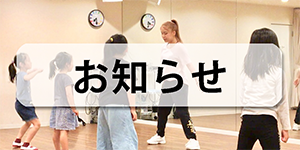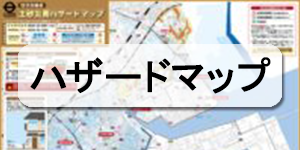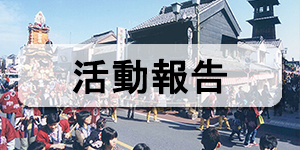御陵衣祭
地御前神社の御陵衣祭は、旧暦5月5日端午の節句に執り行われる。今年は5月31日(土)に行われた。午後2時から祭典が開始された。昭和の終わり頃まで厳島神社から神馬を船に乗せて神職と共に渡ってきていた。
祭典は、先ず神饌や祭典に奉仕する神職及び参拝者を祓い清める「修祓」に始まる。次に齋主並びに祭員は客人社に進み着座する。これより客人社における祭典が開始され、神前にお供もの奉献する「献撰」、齋主祝詞奏上、齋主玉串奉奠、神前のお供物を撤下する「撤撰」の次第で執行される。続いて齋主並びに祭員は大宮社に進み着座する。これより大宮社における祭典が開催される。次第は客人社と同じだが、齋主玉串奉奠に続き、地元の代表者や初節句の男児(※1)が玉串を奉奠する。
祭典終了後、舞楽が二曲奉奏される。一曲目は「蘭陵王」である。別名「陵王」とも称される。中国六朝時代の北斎国王蘭陵王⻑恭は周の大軍と戦って大勝し、勇名を天下に轟かせた。その武勲を賞賛し、その勇壮な様を模した舞いと伝えられている。舞人は⻯頭を頂いた面を被り、赤色の裲襠装束を着け、一尺程の金色の桴を持って舞う。舞振りは頗る迅速軽妙である。
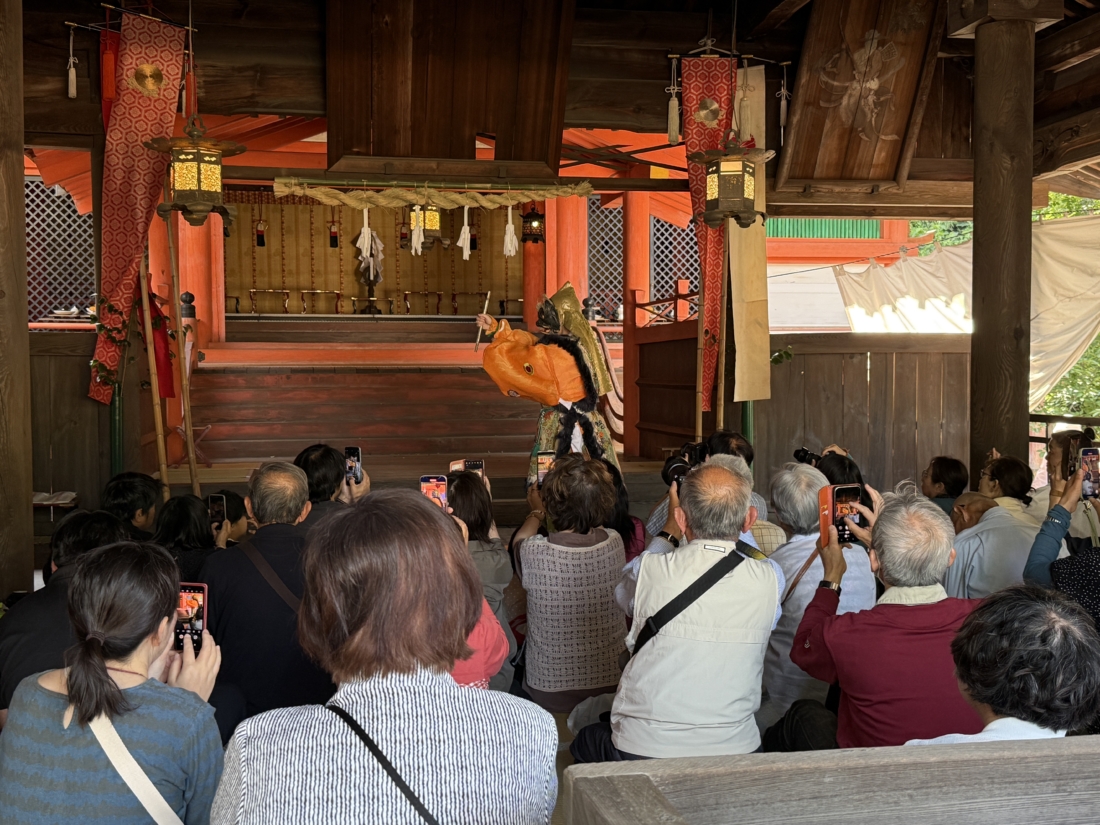
(15:30頃)
二曲目は「納曽利」である。この舞は「蘭陵王」の答舞で雌雄の龍が昇天する姿を模した舞いと言われている。二人舞と一人舞があり、御陵衣祭は一人舞である。舞人は萌⻩色の裲襠装束を着け、一尺程の銀色の桴を持って舞う。舞振りは活気があって頗る面白く、手振り足遣いは大変巧妙である。
なお、舞楽の曲目は一定ではなく、数年前には「納曽利」に替えて「還城楽」が奉奏された。また雅楽(※2)・舞楽の演奏にはかっこ、さんのつづみ 、太鼓、しょうこ、 しょう 、ひちりき、 りゅうてき、こまぶえが用いられる。 御陵衣祭の祭典開始前には、神馬に飾り付けを施し、お供の人も白張を着け、神職の御祓いを受けた後、獅子頭に先頭されて地御前の町内を巡行する。
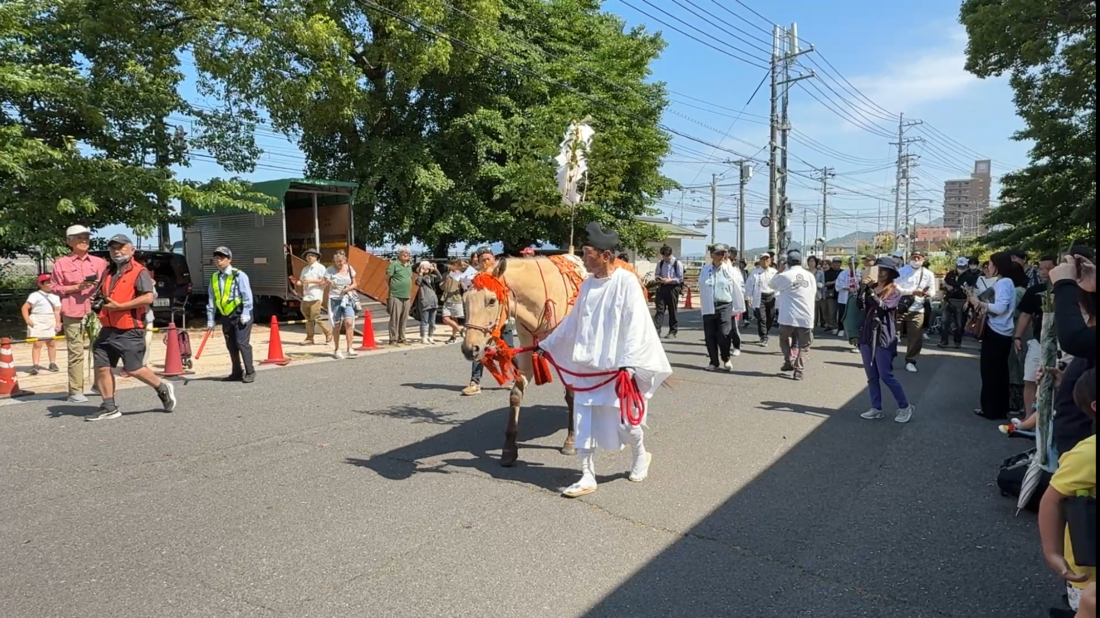
(14:30頃)
天保年間時代(1839年)頃は3日間、祭典が執り行われた。
5 月3日:厳島神社より渡海,お供・祝詞・上郷榊舞・人⻑の舞・東游神興お旅所へ。神馬お渡りの儀。
5 月4日:お旅所で奏楽。唐獅子舞。
5月5日:お旅所より還御。還御後,流鏑馬。舞楽,陵王・納曾利。
「地御前ものがたり」(編集:地御前郷土文化保存会)より一部加筆して引用
※1赤いハチマキを締めて祭典に参加している。
※2舞の雅楽は、厳島神社神職によって演奏されている。
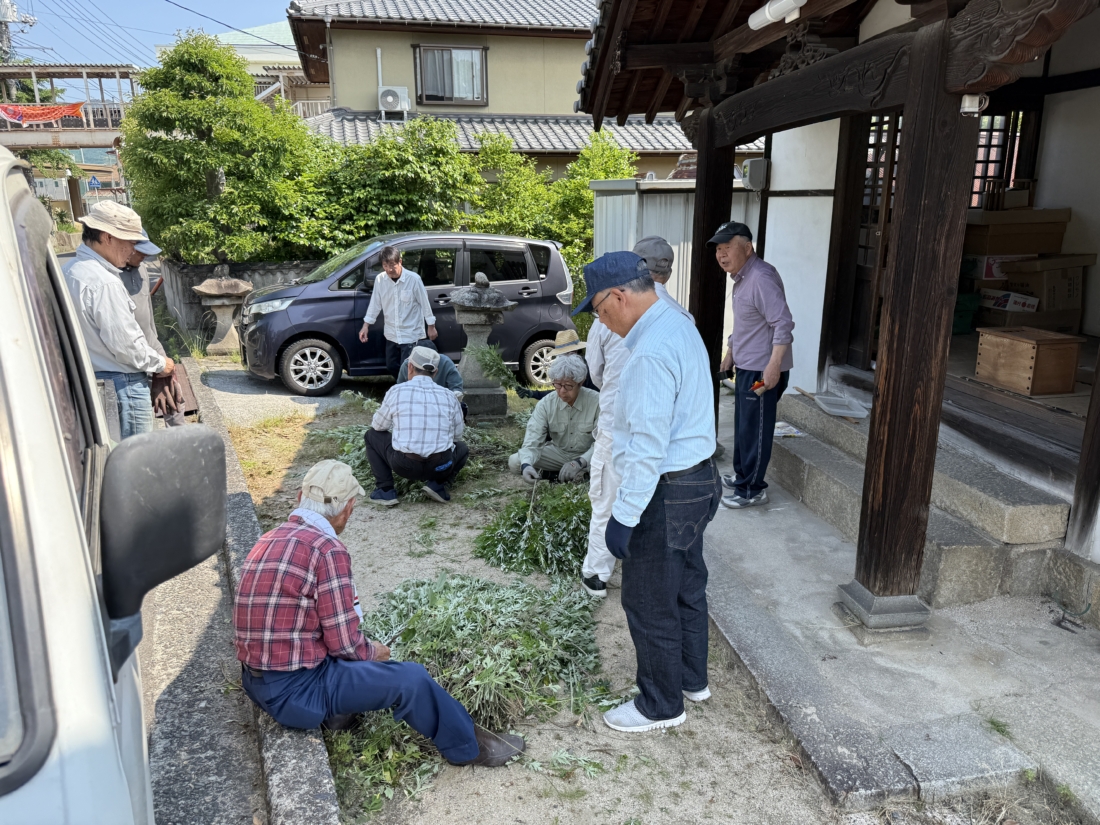
巡行では端午の節句に因んで、地御前郷土文化保存会が用意した菖蒲とヨモギの束が配られる。端午の節句は「菖蒲の節句」とも呼ばれ、菖蒲湯に入ったり、菖蒲とヨモギを束ねて軒に揚げて、無病息災・厄除けを祈願するという全国的な風習がある。菖蒲は勝負・尚武に通じることから、男の子の立身出世や武運⻑久の願いをかけていると言われている。 当日午前9時から郷土文化保存会ほかの地元有志が集まり、菖蒲とヨモギを合わせた束を350〜400束程度用意をした。
文責:地御前地区自治会広報事業部 桐林 潤
The Goryoe Festival
The Goryoe Festival at Jigozen Shrine is held on the Boy’s Festival “Tango-no-Sekku" on May 5th of the lunar calendar. Until the end of the Showa period, it was crossed with priests and white horse “Jinme"on a boat from Itsukushima Shrine.
The festival begins with the “Shubatsu" that exorcises and purifies priests and worshippers who serve the shrine and the festival. Next, the priest and the festival staff go to the guest shrine and sit down. From now on, the festival at the guest shrine will begin, and it will be executed in the order of the “Kensen" to dedicate many offerings to the gods, the priest congratulatory speech, the priest put reverentially offering a branch of the sacred tree to the gods, and the “Tessen" to remove the offerings in front of the gods.
Then, the priest and the festival members proceed to Omiya Shrine and sit down. From now on, a festival will be held at Omiya Shrine. The order is the same as the guest shrine, but following the worship of the main priest’s reverentially offering a branch of the sacred tree, local representatives and boys of the first festival worship reverentially offering a branch of the sacred tree.
After the festival, two dance songs will be played. The first song is “Ranryo-oh". It is also called “Ryo-ho". During the Six Dynasties of China, King of Hokusai country, Ranryo-oh-Chokyo during the Six Dynasties of China, fought against the great army of Shu and won a great victory, making his name for his bravery in the world. It is said that he praised his military honour and imitated his heroic appearance. The dancer wears a face that has a dragon head, wears a red kimono, and dances with a golden plectrum of about one foot. The dance is very quick and light.
The second song is “Nasori". This dance is said to be a dance that imitates the appearance of a male and female dragon ascending to heaven in the answer dance of “Ranryo-oh". There are two-person dances and one-person dances, and the Goryoe Festival is one-man dance. The dancer wears a cute yellow-coloured outfit and dances with a silver plectrum of about one foot. The dance is lively and very interesting, and the hand gesture is very clever.
Kakko, San no Tsuzumi, Taiko, Shoko, Sho, Hichiriki, Ryuteki, and Komabue are used for the performance of Gagaku and Bugaku. Before the start of the festival of the Goryoe Festival, the Jinme(the white horse) is decorated, and the attendants also wear white clothes. After receiving the exorcism of the priest, they are led by the lion head and parade the Jigozen area.
On the parade, a bunch of irises and mugwort prepared by the Jigozen Local Culture Preservation Association is distributed on the line of the Boy’s Festival. The Boy’s Festival is also known as the “Iris Festival", and there is a national custom of going into the iris bath, bunding irises and mugwort and put them on the eaves to pray for breaking through disease, disaster and bad luck. Since the iris and martial spirit are pronounced the same, it is said that it is a wish for a boy to get ahead and have good luck.

